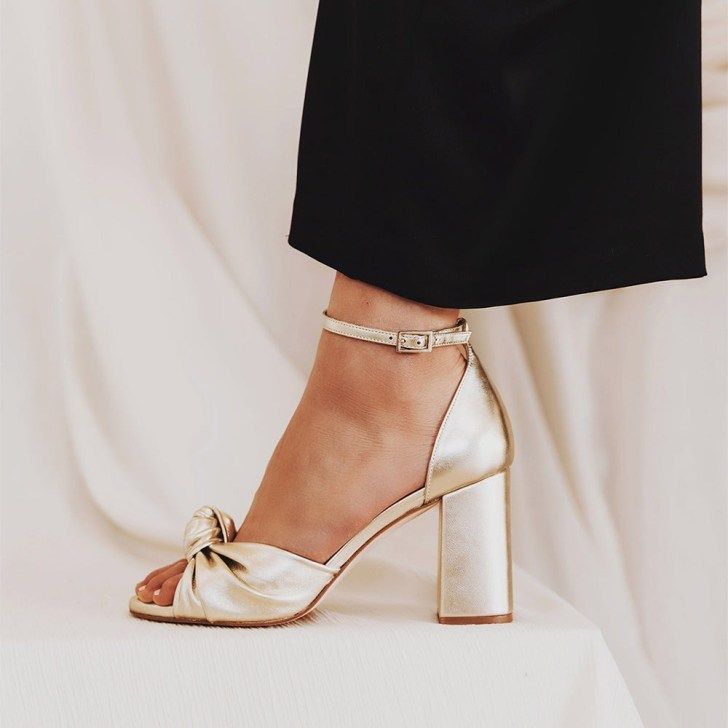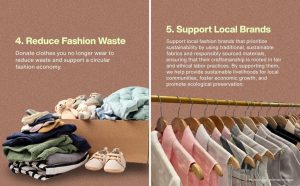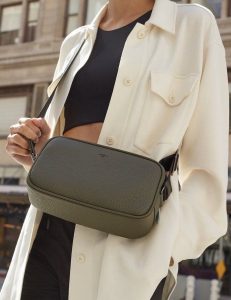
As we continue to see the harmful effects of fast fashion on our planet, the importance of sustainable fashion has never been more apparent. In 2025, we can expect to see a shift towards more eco-friendly and ethical practices within the fashion industry. Let’s take a look at some of the sustainable fashion trends that are expected to dominate the industry in the coming years.
1. Circular Fashion
Circular fashion is all about creating a closed-loop system where clothes are designed, produced, and recycled in a way that minimizes waste and maximizes the lifecycle of the garment. In 2025, we can expect to see more brands adopting circular fashion practices, such as using recycled materials, offering repair and rental services, and designing clothes with longevity in mind.
2. Vegan Fashion
With an increasing focus on animal welfare and environmental impact, vegan fashion is set to become a major trend in 2025. This means using cruelty-free materials such as plant-based fabrics, recycled fibers, and innovative alternatives to leather and fur. We can expect to see more brands shifting towards vegan fashion and offering stylish, sustainable options for consumers who want to make ethical choices.
3. Transparency and Traceability
Consumers are becoming more conscious about where their clothes come from and how they are made. In 2025, we can expect to see a rise in transparency and traceability within the fashion industry, with brands sharing information about their supply chain, production practices, and the environmental and social impact of their garments. This will help consumers make more informed choices and hold brands accountable for their actions.
4. Slow Fashion
Slow fashion is all about quality over quantity, focusing on timeless pieces that are made to last. In 2025, we can expect to see a return to slow fashion principles, with consumers valuing craftsmanship, durability, and sustainability. This means investing in fewer, higher-quality pieces that can be worn for years to come, rather than buying into the disposable nature of fast fashion.
5. Tech-Driven Sustainability
Advancements in technology are playing a crucial role in driving sustainability within the fashion industry. In 2025, we can expect to see more brands using cutting-edge innovations such as 3D printing, artificial intelligence, and blockchain to reduce waste, optimize production processes, and create more eco-friendly alternatives to traditional materials. Tech-driven sustainability is set to revolutionize the way clothes are made and consumed.
6. Upcycling and Repurposing
Upcycling and repurposing are becoming increasingly popular ways to breathe new life into old clothes and reduce textile waste. In 2025, we can expect to see more brands embracing these practices, turning discarded garments into fresh, fashionable pieces. Upcycling not only helps to reduce the environmental impact of the fashion industry but also adds a unique, creative twist to traditional fashion design.
7. Green Packaging
In 2025, sustainable fashion goes beyond just the clothes themselves – it also includes eco-friendly packaging. More and more brands are making the switch to sustainable packaging materials, such as recycled paper, biodegradable plastics, and compostable alternatives. Green packaging helps to reduce the carbon footprint of the fashion industry and shows a commitment to environmental responsibility.
As we look ahead to 2025, it’s clear that sustainable fashion is here to stay. By embracing circularity, veganism, transparency, slow fashion, tech-driven sustainability, upcycling, and green packaging, the fashion industry can move towards a more ethical and eco-friendly future. Consumers play a crucial role in driving these trends by making informed choices and supporting brands that prioritize sustainability. Together, we can create a more sustainable fashion industry for 2025 and beyond.

